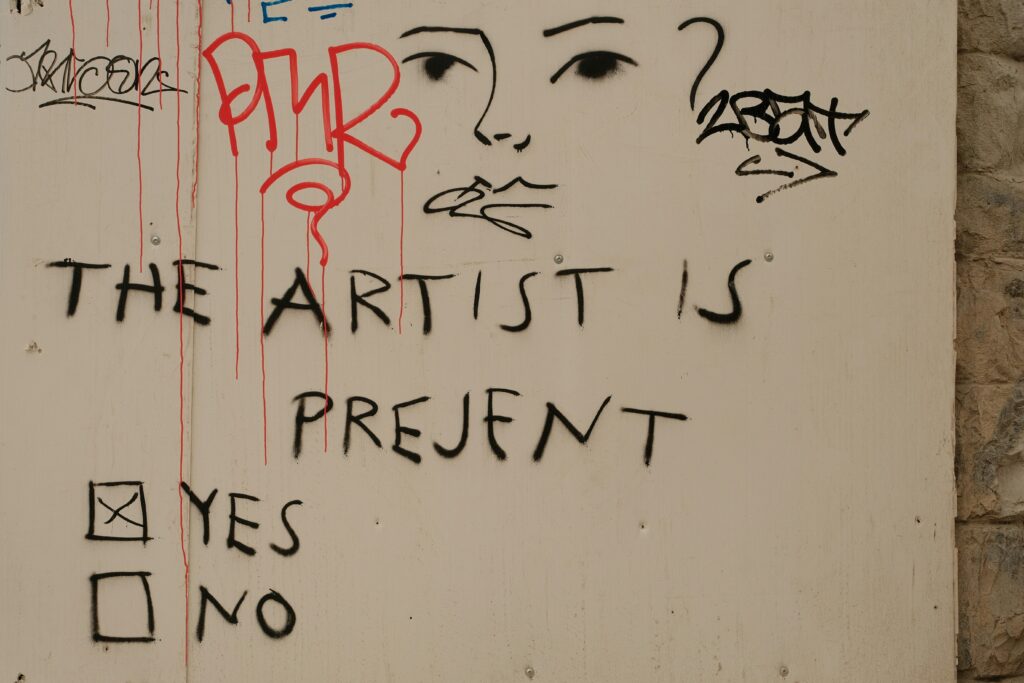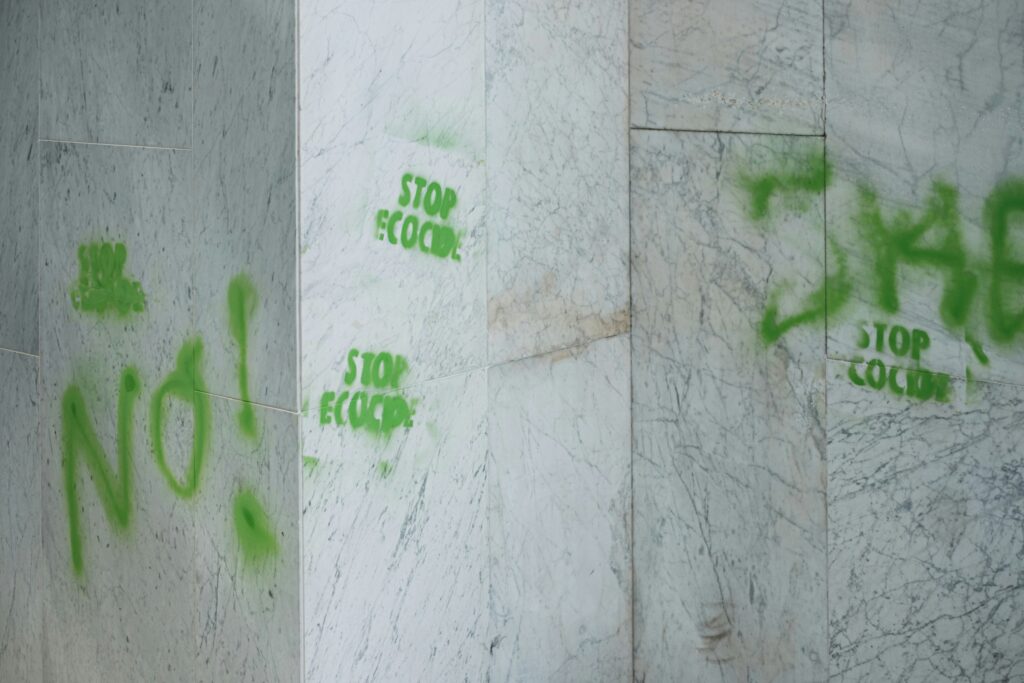A Rough Return to the Brush: The Origins and Legacy of Neo-Expressionism
Neo-Expressionism didn’t come quietly. By the late 1970s and early 80s, conceptual art and minimalism had stripped painting down to intellectual bones. Neo-Expressionism swung the pendulum back—loud, raw, and unapologetically human. It wasn’t exactly pretty. But that was the point. Emotion over polish. Instinct over structure.
What sparked it? Disillusionment. A cultural itch for something with guts. Artists stepped away from cold theory and leaned back into figuration, narrative, and symbolism. Works were personal, political, messy, and magnetic. Germany saw the rise of Georg Baselitz and Anselm Kiefer, whose works tangled with war, identity, and trauma. Across the Atlantic, Jean-Michel Basquiat brought street-smart urgency and coded brilliance into galleries that barely knew what hit them.
This wasn’t a style revival—it was a statement. Art could speak plainly again, and still cut deep. That’s why it stuck. Today, in an era dominated by digital noise and curated perfection, the rough edges of Neo-Expressionism still resonate. People crave real. And raw never goes out of style.
Traditional Media, Untraditional Expression
Rethinking the Classics
While digital tools dominate many creative spaces, traditional painting materials like oil, acrylic, and mixed media are experiencing a bold resurgence—used not in standard ways, but as vehicles for deeper emotional and conceptual impact. Artists are pushing these mediums beyond expected boundaries.
- Oil Paint: Used for layering, blending, and creating atmospheric depth
- Acrylic: Leveraged for rapid drying and aggressive stroke work
- Mixed Media: Combines unconventional additives like sand, charcoal, or fabric to add dimensionality and conceptual weight
Balancing Chaos with Control
A compelling trend in contemporary art involves intentionally teetering between spontaneity and structure. Artists are inviting disorder—experiments with splatter, decay, erosion, and fragmentation—without losing command of fundamental composition.
- Deliberate imperfections turn into focal points
- Compositional anchors keep visual chaos grounded
- Unresolved tension becomes part of the message
The Texture of Emotion
Texture is no longer just a visual footnote; it’s a central emotional driver. Artists are using layered surfaces not only to catch light or movement, but to create tactile narratives that reflect human experience.
- Rough textures suggest friction, rawness, vulnerability
- Smooth areas offer contrast and emotional release
- Cracked, aged surfaces evoke memory and time
Traditional materials may be old, but in the hands of today’s creators, they’re anything but outdated. They speak loudly, touch deeply, and continue to evolve.
After years of clean lines and clever concepts, a louder form of expression came roaring back. Artists traded minimalism for emotional intensity. No more subtlety. Bold colors, jagged shapes, and raw, sometimes violent brushwork dominated the canvas. You could see the shift—anger shouted from reds, heartbreak dripped through smeared blacks, and hope pulsed in chaotic blends of light.
Concepts without a heartbeat were out. Creators wanted to feel again, and so did their audiences. That meant ditching abstraction in favor of faces, bodies, and scenes that spoke clearly. Figurative imagery gave pain and joy a shape people could point to. No guessing, no pretension, just honest emotion made visible.
This wasn’t nostalgia. It was necessity. In a world overloaded with filtered lives and polished feeds, raw expression became the rebellion. And people showed up for it.
Neo-Expressionism wasn’t content staying boxed into the galleries of West Berlin or the studios of Rome. What started in Europe in the late ’70s quickly found its way across the Atlantic and beyond, carried by a mix of critical curiosity, market interest, and raw creative momentum. In the U.S., especially in New York, the movement picked up a different speed. Artists like Jean-Michel Basquiat and Julian Schnabel layered personal symbolism with street energy, turning Neo-Expressionism into something more urban and urgent.
Region shaped the art. In the East, works leaned toward political commentary, often reflecting tensions from decades behind the Iron Curtain. In contrast, many Western interpretations prioritized individual psyche and spontaneous gesture. The styles were loud everywhere, but their messages shifted depending on where they were painted.
Then there was the global dialogue. From Japan to Brazil, artists took the movement, stripped it down, and reshaped it through local lenses. In places with deep visual traditions—such as Korean ink painting or Indigenous Australian art—Neo-Expressionism offered a loose framework to challenge or revive older forms. It turned into less of a style and more of a language. Across borders, it spoke of chaos, honesty, and impulse. But it never sounded exactly the same twice.
Vlogging didn’t always get a warm welcome. Early on, it got slammed for being too flashy, too self-focused, and overwhelmingly male. Critics saw it as shallow digital diary-keeping or a branding tool rather than something with real creative or cultural value. But the landscape was still forming, and those first impressions didn’t stick forever.
Fast forward to the 21st century, and the tone has shifted. Scholars and media critics are looking again. More people are starting to see vlogging as something that reflects real life, real struggles, and real stories. What used to be dismissed is now being studied — not just as content, but as a form of storytelling.
At the same time, voices that had been pushed out or drowned out are showing up strong. Women, nonbinary creators, and artists from across cultures are claiming space and reshaping what vlogging looks like. It’s more layered now. The emotion is there, but there’s depth. The style varies, but the core is more inclusive. What once felt like a boy’s club is starting to look more like a collective, with room for more stories, more truths, and more perspectives.
Neo-Expressionism never really left. Its raw brushstrokes, emotional urgency, and gut-level storytelling still echo across today’s visual landscape. The movement’s DNA shows up everywhere—street art that screams in color, digital illustrations layered in chaos and feeling, even activist pieces built on urgency rather than polish.
The shift in medium didn’t erase the message. Instead, it funneled into new forms. Muralists and graffiti artists channel that same explosive emotion into massive urban canvases. Digital creators use tablets instead of oil and canvas, but the energy is just as fevered. Even in eco-political work, there’s that same Neo-Expressionist soul: imperfect, loud, and defiant.
This style isn’t just about looking edgy. It’s about confronting the moment head-on. And today’s moments—climate anxiety, social unrest, digital burnout—are fueling a whole new wave of expressive urgency. Neo-Expressionism’s legacy lives on because the need to scream, paint, and agitate hasn’t gone away.
Explore how the mission behind the art has shifted: How Eco-Art Emerged as a Movement for Change.
Emotion never goes out of style. Especially when the world feels shaky, people turn to art that reflects raw feeling over polished perfection. That’s why Neo-Expressionism is back in the conversation. It’s messy, it’s loud, and it makes no apologies.
This isn’t just about brushstrokes and color fields. Neo-Expressionism gives creatives a way to process the personal and the political all at once. Vulnerability shows up right next to protest. Brushes slash the canvas instead of decorating it. It isn’t subtle, and that’s the point.
Even with new tools on every screen, expression doesn’t need to be complicated. Paint still works. Energy still lands. And when the world doesn’t make sense, it’s often the artist who speaks first, wordlessly. In 2024, art that feels urgent and human keeps hitting harder than anything perfectly filtered.




